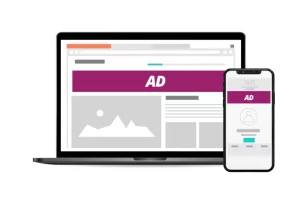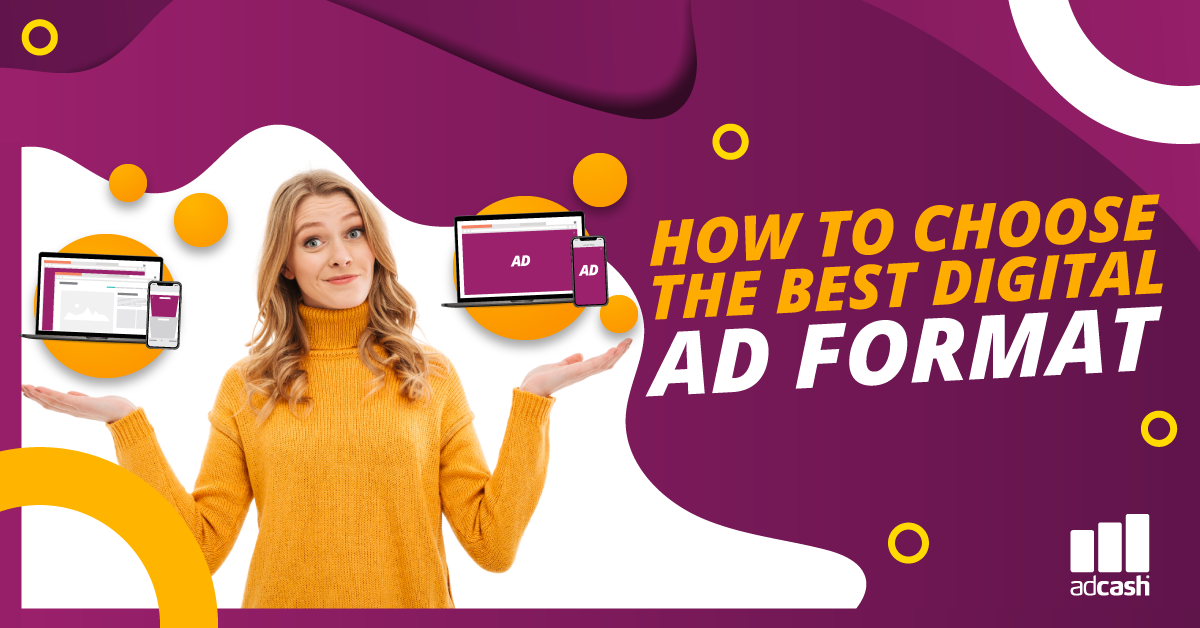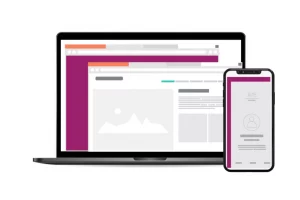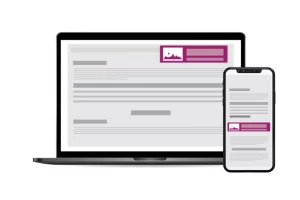Interstitials appear while a website or page is loading. The time between browsing helps to reach the end-user with an immersive, tailored, and engaging ad experience.
The ad also has a hard-coded 5-second countdown window, meaning a guaranteed delay in exit times and a more substantial monetization potential.
Interstitials are an extremely versatile and cost-effective ad format for advertisers and deliver maximum exposure in return for a minimal investment.
Publishers get access to unique features and filters to create a better site experience (which ultimately comes with higher earnings).
With larger display frames and high-quality visuals, Interstitial Ads are designed for maximum visibility and reach.
Choose between the full screen or overlay option and keep the composition of your site at an all-time high.
Native Ads

Native ads are still as effective today as they were ten years ago and remain an incredibly effective way for advertisers to promote products and services online.
The format blends seamlessly with the surrounding onsite content, working tirelessly to generate high engagement rates and conversions along the way.
When onsite, Native Ads are regarded as less intrusive and provide publishers with an easy way to boost their ad revenue.
Not only does this equate to higher monetization, but the lack of UX interference keeps the audience on-site for an extended time and brings in new prospects.
These ads can blend perfectly with the audience’s experience. They match the look, form, and function of the site where they appear.
Banner Ads

And last but not least, we’ve got the original Display Banner, known for versatility and complete delivery.
Skyscraper
A tall and narrow banner type, available for both desktop and mobile web. Typically placed to the side of the page content for higher exposure and increased visibility.
Rectangle
Compatible with almost any operating system globally, the rectangle banner is what you first think of when it comes to digital advertising.
Versatile, flexible, and constantly adapting to the requirements of the web page, Rectangles are mobile-web compatible and by far the most commonly utilized format.
Leaderboard
This top-performing Display Banner is usually placed at the top of a webpage for maximum visibility and reach.
These are often the first ad a website user sees when logging onto the site.
Appearing above the content rollout, leaderboard banners are uniquely eye-catching, larger than life, and easy to read.
There are plenty of digital ad formats to boost your strategy. The challenge is knowing which one to deploy. Here are 3 of them!







Join the conversation
0 comments
Submit a comment
Your email address will not be published. Required fields are marked *